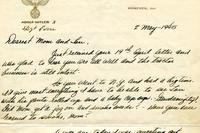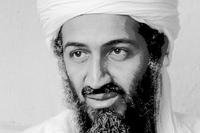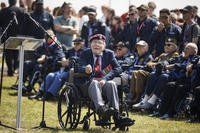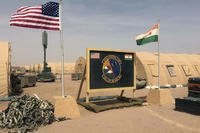On a peaceful day in December 1941, Staff Sgt. Lee Embree took off in a Boeing B-17E from the San Francisco area for what promised to be a quiet flight to the Philippine Islands — but by the time the plane next touched down, the United States was at war with Japan.
The Port Angeles resident's Flying Fortress was one of 12 that arrived at Hickam Field, Honolulu, Hawaii, as Pearl Harbor was being attacked by Japanese Navy aircraft.
Embree was an aerial photographer. He'd been issued an Army Air Forces camera that weighed 35 pounds and required 24-volt electrical hookup.
But it was his personal 4x5 Speed Graphic that he reached for when he shook off the shock of what he was seeing. And it was with that camera that he took some of the first pictures published of the United States at war.
Embree took his film to the Hickam Field photo lab, but it was a smoking ruin, like almost everything else at the air base. He got a lift to Fort Schafter and had the film processed there, but when he returned for it the next day, a captain told him he couldn't have it — the film had been appropriated by Navy Secretary Frank Knox.
"I was in the Fiji Islands when I saw an Australian news magazine that had one of my pictures on the front cover," Embree said. He was glad to know the film wasn't lost forever, like the Ark of the Covenant in the Indiana Jones movie.
He later found out his pictures had run in other publications, such as the Dec. 29, 1941 issue of Life. And when the war was over and he was back in the States, an official envelope arrived that "was covered, both sides, with APO (Armed Forces Post Office) markings. It had followed me all over the Pacific."
Inside were his original negatives.
"Someone had been smart enough to keep my name with the negatives," Embree said. "I was so happy to have the film back, I didn't think to save that envelope."
Embree has seen the current hit movie "Pearl Harbor" — "It was very emotional for me," he said, even though, "Well, it was Hollywood. They put a lot in that was not really what happened."
But he was moved by the scenes of Navy nurses, used to dealing with cases of sunburn, suddenly swamped with mass casualties from the raid. "Those doctors and nurses, they were just going crazy," he said quietly.
It was emotional for another reason. Just before they took off from the mainland Dec. 6, his squadron commander had switched him to the E model from the D model he was scheduled to fly in, because the older plane's 12-volt system wouldn't run the aerial camera Embree never had the chance to use. He switched places with a flight surgeon. The flight surgeon was killed by Japanese strafing as the plane Embree was supposed to be on landed at Hickam.
Embree was one of a dozen B-17 veterans who were at the Museum of Flight Tuesday and yesterday to greet — and get a ride in — the Experimental Aircraft Association's flying B-17G, "Aluminum Overcast." The plane's visit was sponsored by the EAA's Cascade Warbird Squadron 2.
The Seattle-based squadron is the largest of 31 such EAA chapters in the country, said Bob "Crash" Williams, the group's current chief. The group is dedicated to "keeping history alive," he said.
Aviation buffs such as Mark Carpenter of Seattle paid $350 for a flight on "Aluminum Overcast." The money aids in restoration and buys gas for the four-prop bomber. But the veterans, having paid the price in 1944, rode free.
Art Heino of Bellevue flew 33 combat missions in 1944-45 — backwards. As a tail gunner, he knelt over his two .50-caliber machine guns in the extreme rear of the plane, almost closer to the German fighter pilots than to some of his buddies.
One legend about the Seattle-built bombers was that they always came back — the robust planes could take heavy damage and still bring you home. Heino might agree: A German fighter shredded his plane's rudder, right over his head. The pilot brought it back using just the ailerons to turn.
At 19, he was the youngest in his 94th Bomb Group, 8th Air Force crew. In fact, in the November 1944 presidential election, he was flying combat missions "but I couldn't vote. I was very upset about that" — even though his candidate, Franklin Roosevelt, won in a landslide.
Walter Bergstrom of Federal Way flew 24 missions as ball turret gunner before a German fighter shot his plane up and started a fire. The plane made it back to England, but the fire spread to a fuel tank and everyone but the pilot bailed out. The pilot got the plane to their airfield, but Bergstrom's parachute didn't open completely and he spent the next 14 months in hospitals. "I still have the limp," he said.
But for two other veterans at the museum Tuesday, the legend of always getting back rings a little hollow. Ralph McLaren was shot down over Berlin on his sixth mission April 18, 1944, and spent the rest of the war at Stalag 17B. Jim Klansnic of Bellevue was a B-17 pilot for four missions. He was shot down on a raid to Steyr, Austria and spent 13 months as a prisoner.
Did they know movies they'd recommend as especially accurate? "12 O'Clock High"? "Command Decision"?
"Stalag 17," McLaren said, having bunked beside the man who wrote the script for the William Holden movie.
"Hogan's Heroes," quipped Klansnic — referring to the television comedy about POW air crews that starred Bob Crane. "Some of that was more than true."
Boeing Country runs Tuesdays and Thursdays. Chris Genna can be reached at 253-872-6720 or chris.genna@southcountyjournal.com. PHOTO by Matt Brashears/Journal: Lee Embree of Port Angeles smiles after a flight on a B-17 Flying Fortress yesterday at Boeing Field. Embree was on board a B-17 on Dec. 7, 1941, en route from California to Hawaii when the crew of his plane unwittingly flew directly into the Japanese attack on Pearl Harbor.















